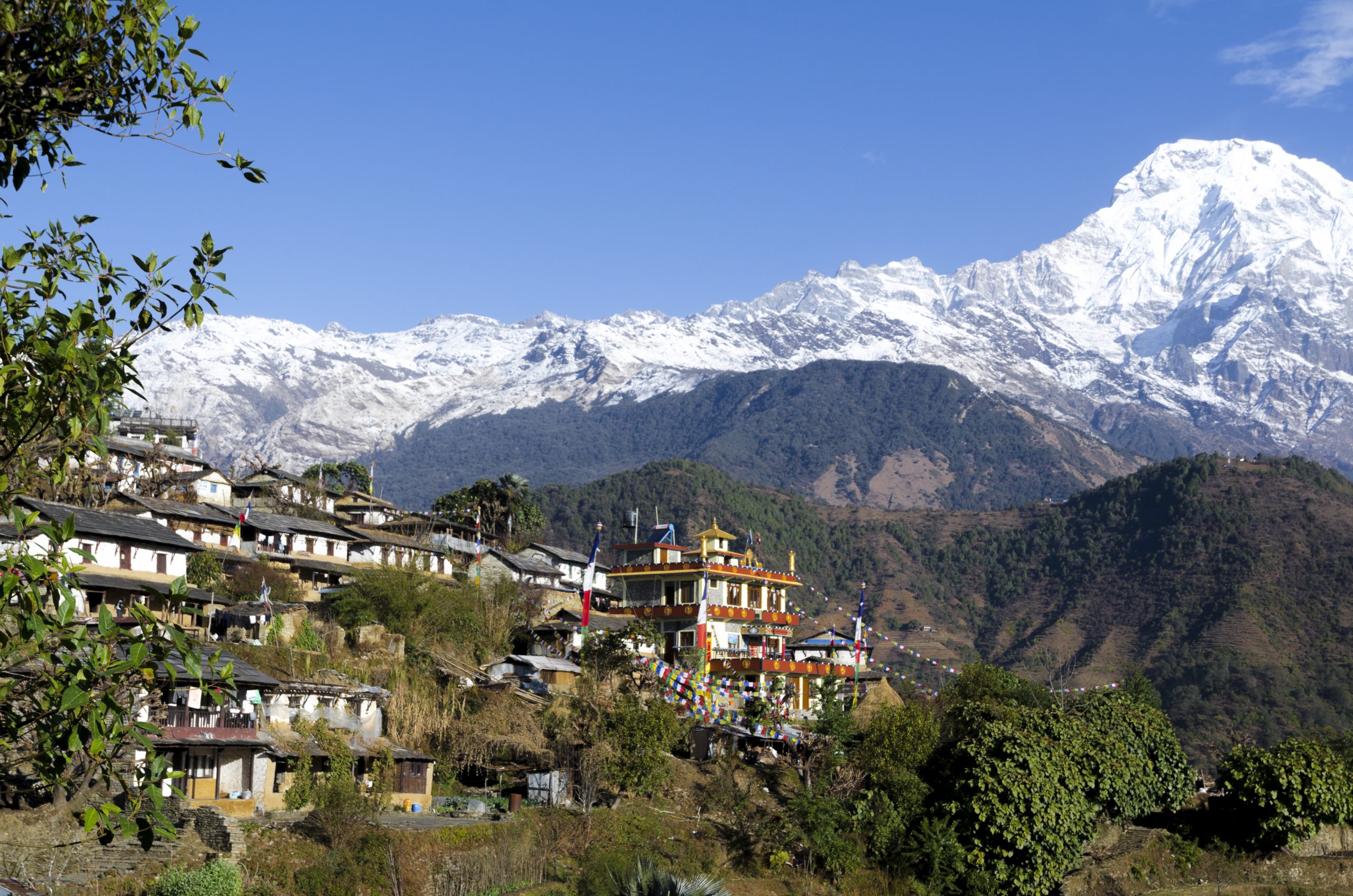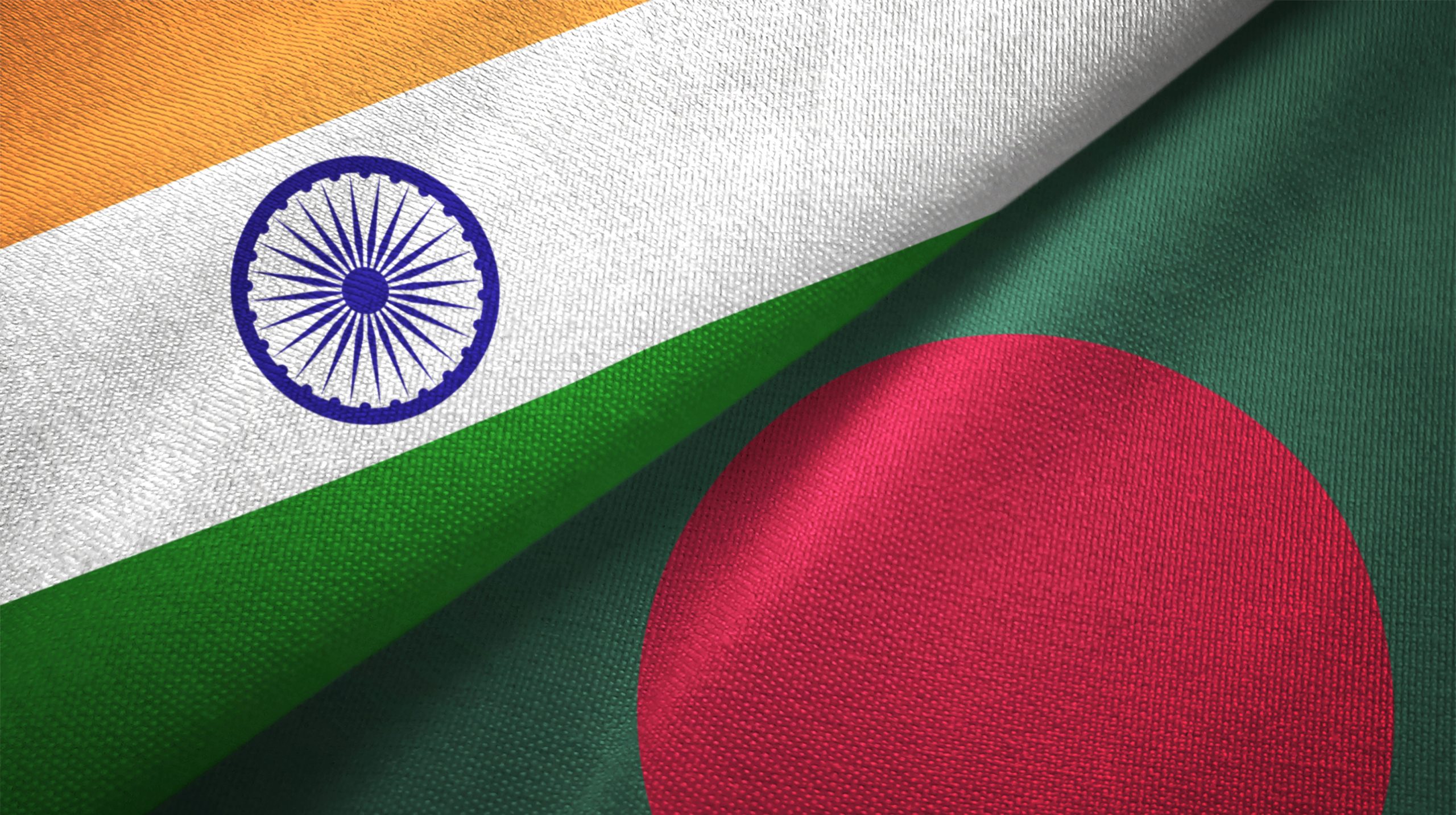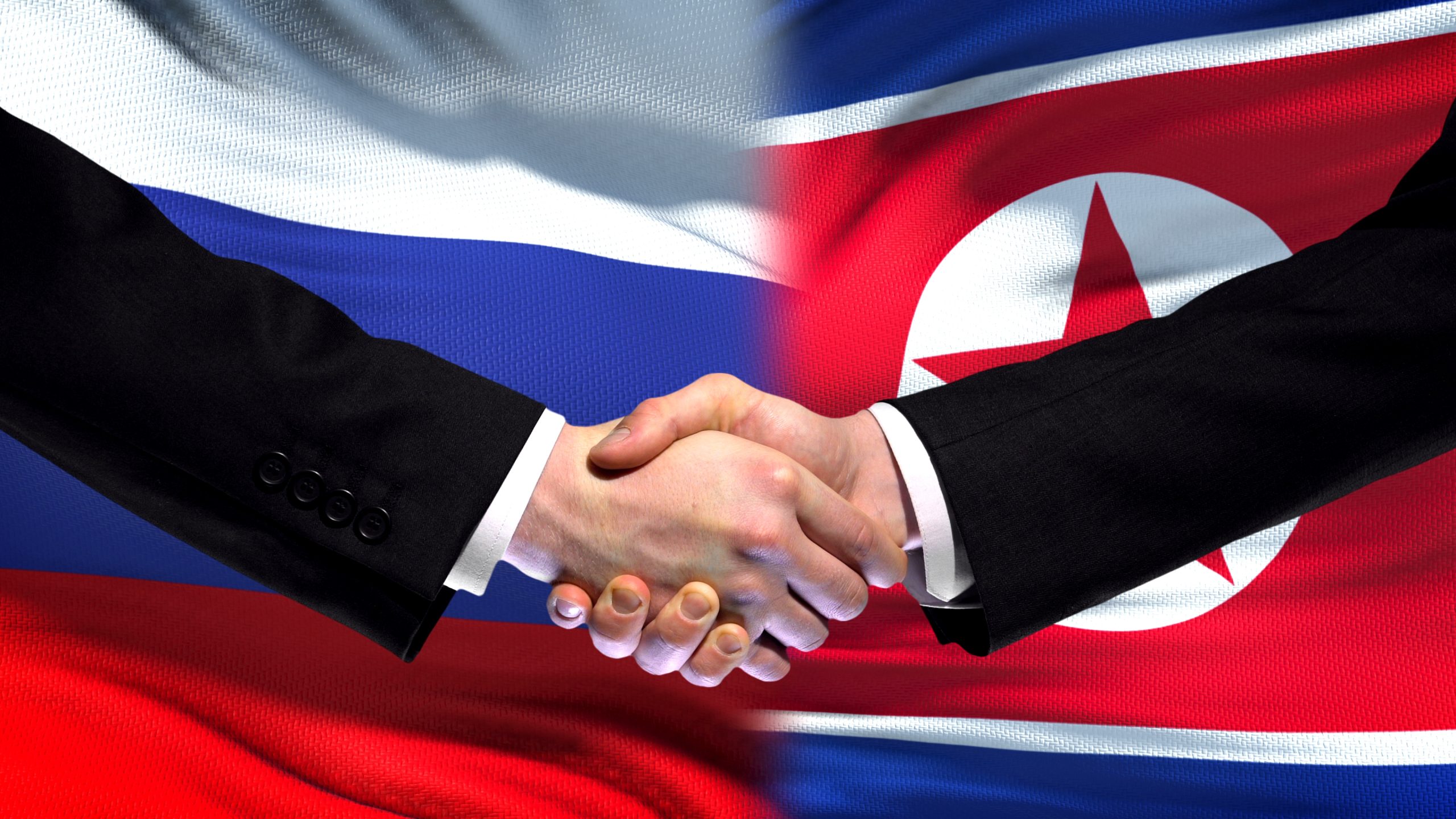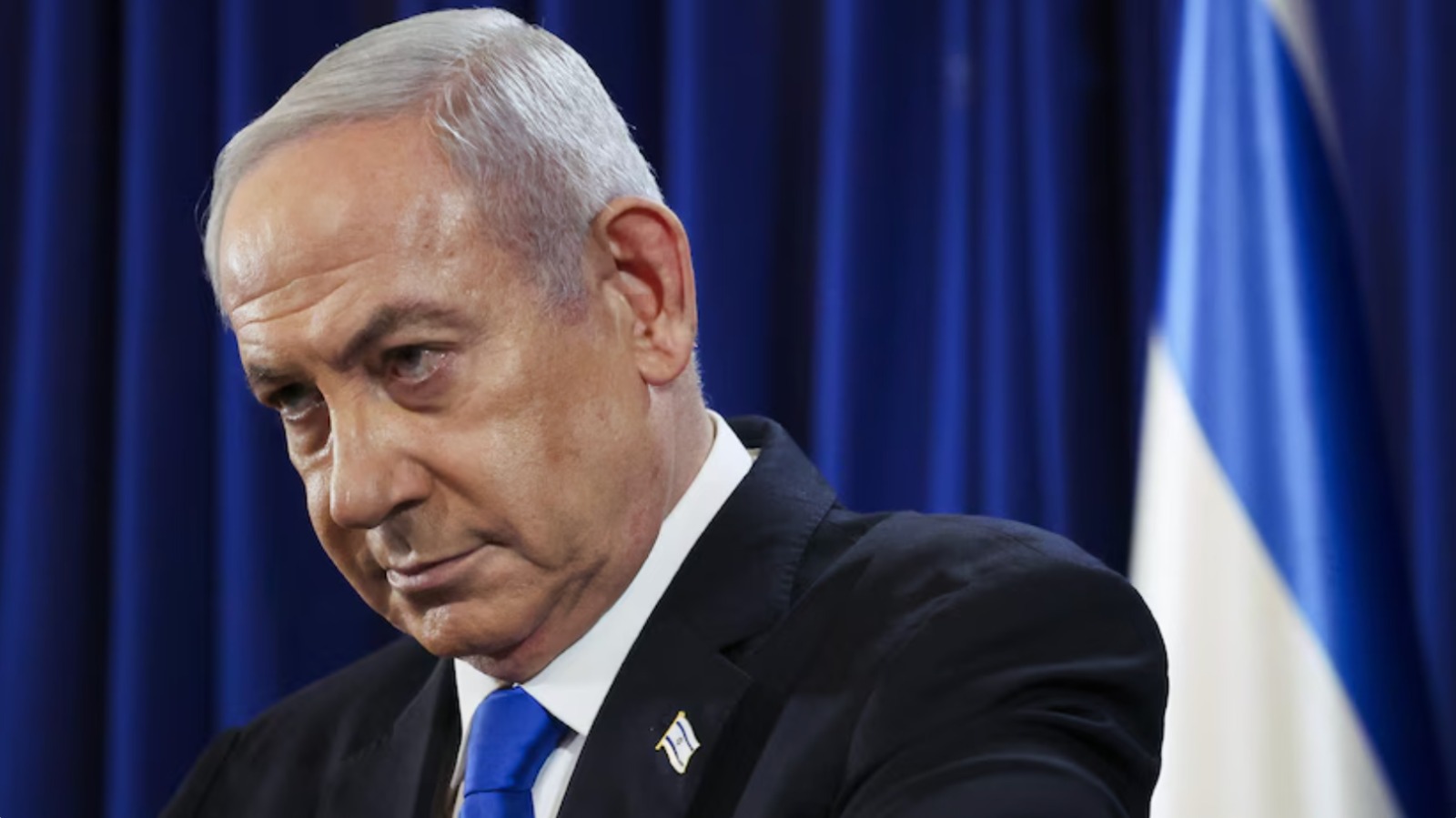
China and India in Nepal: A Struggle for Influence
Thu, 01 Apr 2021 | Reading Time: 9 minutes

China and India in Nepal: A Struggle for Influence
“If China succeeds in replacing India as the key economic as well as security partner for Nepal… it would have breached the Himalayan borders that separates the Indian mainland from China.”
Shashank Shukla
Historical Perspective
Nepal’s first recorded official engagement relationship with China dates back to the middle of the seventh century, when Nepal’s armed forays into Tibet led to Chinese intervention in favour of Tibet. It resulted in the signing of the Sino-Nepalese Treaty of 1792, which provided for a tribute-bearing mission from Nepal to China every five years as a symbol of China’s political and economic supremacy in the region.
Tibet has been the focal point in their off-and-on relations for many years till 1814-16, when British India entered as another important contender for Nepali loyalties. It was during the first Anglo-Nepalese war of 1814, when China refused to come to Nepal’s aid and voluntarily ceded its dominant position in Nepal to the growing British influence in the region. In 1856, the Treaty of Thapathali was signed between China and Nepal, after Nepal invaded Tibet which forced Nepal to accept China’s special status as well as made it obligatory for Kathmandu to come to Tibet’s rescue in case of any foreign invasion.
However, Nepal refused to honour its obligation to Tibet, when Colonial Power of the British-Indian army invaded Tibet in 1910. This created shock waves in China about Britain’s designs. Later, in 1911, Nepal reneged from its treaty with China and declared that it would help Tibet attain independence status, if it suited British interests. This break between Kathmandu and Beijing lasted till 1955, when relations were re-established with China. Subsequently, a treaty of peace and friendship was signed between them in 1960.
“Nepal is A Yam between Two Boulders”, King Prithwi Narayan Shah
Maintaining a balancing relationship with China is one of the key and critical components of Nepal’s China policy. At the other end of the spectrum, there is always one or the other country which Nepal considers crucial for its own survival given its delicate land-locked positioning between India and China, the two emerging Asian superpowers. Earlier, it was Britain whose overwhelming presence in South Asia, and India in particular, gave enough reason for Nepal to sometimes take an independent look at its relationship with China. It was Britain which soon after the Anglo-Nepalese War in 1816 made Nepal sign the Treaty of Sagauli, which settled Nepal’s present-day boundaries by quashing its claims over the disputed Terai (low lands) territories.
Later, post the retreat of Britain in 1947, the vacuum that was created in the power equation was sought to be filled by India which was tried to emerge as one of the more formidable powers in South Asia. This initial thrust starting from 1950 resulted in the initiation of two important treaties, firstly the Indo-Nepal Treaty of Peace and Friendship, and secondly, the Trade and Transit Treaty. These treaties provided the basis for the initiation of emerging bilateral relations between a newly independent India and Nepal. However, this resulted in the articulation and identification of “too many mutual similarities” although well-intended, resulted in the creation of suspicion in the minds of the Nepalese politicians, about this newly independent India and her intentions. They also felt that these treaties continuously reminded them of their own perceptions of their inferior status vis-à-vis India.
Later in the seventies, there were a series of events which included the Indo-Soviet Treaty of Peace, Friendship and Cooperation in 1971, the Indo-Pak War and the creation of Bangladesh, the merger of Sikkim in India in 1974 and later, India’s unofficial support to the political Opposition in Nepal. Further, along the Indo-Nepal border, there was the alarming rise of “Naxalism” in the areas of Silliguri and Naxal in West Bengal which created a great deal of apprehension in the minds of the King of Nepal and his coterie of advisors who felt that the spill over of this movement might result in a greater problem in Nepal, especially given the wide disparity in the living standards of the people of Nepal. Later, with India’s nuclear explosion in 1974 and her decision to emerge as a nuclear power, added to Nepal’s discomfiture and fuelled her insecurity about the impact of India’s growing stature as a regional power and her intentions towards Nepal.
It is in this context that Nepal restarted and reshaped its ties with China as a possible counterweight to India. Certain international events too influenced this decision of going back to China, most important was the sudden loss of India in the Indo- China border war in 1962 and beginning of aggressive Chinese posturing with regard to the continual disputed border claims with India. This caused a great deal of alarm in the Nepali power and political structures who felt that China if not influenced now, would do the same to them sooner rather than later. Further this insecurity of Nepal also propelled China to start thinking of the consolidation of her presence within Nepal, discerning correctly that it would be fairly easy to prop up the Nepali power structure against India if and when the need arose given Nepal’s insecurity and apprehensions.
The Revenge of Geography
Nepal lies along the mountains of the central portion of the Himalayas. The land slopes downwards from the almost impenetrable and mighty Himalayan wall of the north until it reaches the southern fertile Terai plains. The narrow track of Terai plains was once covered by thick tropical forest known as the Char Kose Jhadi or malarial curtain”. India lies to the south of the Terai, and China or Tibet to the North of the Himalayas. The river Mechi which flows in between the eastern boundary of Nepal and India forms the eastern border and the river Mahakali in Western Nepal became the western border of Nepal.
The Nepal Himalayas consist of four major massifs – “Nanda Devi (25,700 feet), Dhaulagiri (26,826 feet), Gosainthan (26,305) and Kanchanjunga (28,156 feet) – making the formidable northern wall throughout the length of the country. The 29,028 feet Mount Everest lies roughly midway and gives off no main ridges”.
“Nepal’s shape is roughly rectangular, about 650 kilometres long and about 200 kilometres wide, comprising a total of 147,181 square kilometres of land. A landlocked country, it is surrounded by India on three sides and by China’s Xizang Autonomous Region (Tibet) to the north. It is separated from Bangladesh by an approximately 15 kilometre-wide strip of India’s state of West Bengal, and from Bhutan by the 88 kilometre-wide Sikkim, also an Indian state. Nepal is almost totally dependent on India for transit facilities and access to the sea, that is, the Bay of Bengal.”
“Geographical position and historical development are largely determining factors of Nepal’s foreign policy that regardless of the kaleidoscopic change of contemporary events”, “and no matter what form of government has been instituted or what political party may be in power, no government in Nepal can ignore the fundamentals of geography and in the end, it must return again and again to the same general and fundamental alignment”. This is applicable both in the Indo- Nepalese and the Nepal-China context and is evident in its political relations since the establishment of the modern State of Nepal from its inception.
India’s Security Views
This unique location of Nepal is of immense strategic value to India as well as to China. India has traditionally looked at its northern frontiers with China as the Himalayan watershed. The Himalayan watershed forms formidable military barriers that can be crossed at selected places only and therefore lend itself for a strong defence line requiring significantly lesser resources to defend. Any Chinese military or ideological influx or influence south of this watershed would be inimical to Indian interests and since the mountains of Nepal open out to the great Indian plains, it becomes crucial to safeguard the military interests of India. China, on the other hand, views its borders with Nepal, as the soft under belly of Tibet. It, therefore, finds it necessary to ensure that it retains adequate political, strategic and economic leverage in Nepal so that its security is not compromised.
Nepal’s southern borders with India do not have geographical barriers and are open, porous and in places difficult to monitor by the security personnel. Any anti-India activity in Nepalese border areas will find easy access to a poorly guarded and insecure Indian heartland. These activities could be ISI sponsored violence, smuggling, drug running, and other economic offences.
“China is many things at once in Nepal today. It is a superpower, a beneficent aid-giver, a friend in need, an essential provider, a demanding neighbour, an older brother, a competitor, a model of development and a vision of a developed future. China is changing regional and global dynamics in unprecedented way than Nepal. As China declares itself on the world stage, Nepal wants to tag along for the ride. Relations have never been better than in the contemporary era, but they need to be sustained, nurtured and developed as they evolve. It is in Nepal’s interest to do so, and imperative to do it in a way that acknowledged its own aspirations.”
-Amish Raj Mulmi
The growing presence of China in Nepal could be a major challenge for it to maintain a balance between the two neighbours. While earlier, India had a major share in the Nepalese economy and investments, the environment has recently become more competitive for India. Both countries exert pressure on Nepal if it enters into any agreement with the other. There is also domestic pressure to maintain a balance in the relationship. For example, after the conclusion of BIPPA agreement between Nepal and India , there was pressure both from China and some top leaders of the UCPN (Maoist) on Bhattarai’s government to enter into a similar agreement with China. In an effort to maintain a balance in the hydro-power sector in Nepal, the Interim Constitution’s directive on foreign policy was ignored for the first time in the last four years to allot the West Seti project to China.”
“There has been a constant demand from the radical Maoist factions to allocate more hydro power and infrastructure projects to China in order to neutralise India’s influence. However, given the controversies related to the West Seti project and a delay in the process, China sensed a conspiracy. These doubts emanated from Nepalese media stories that Baburam Bhattarai government was supported by India. This perception was strengthened further when Baburam Bhattarai told the media in advance about Chinese Prime Minister Wen Jiabao’s visit to Nepal in December 2011.”
“Moreover, China has never been comfortable with a pro-India regime in Nepal. It has the impression that such a regime might not take strong action against Tibetan refugees in Nepal. Since China had limited options of replacing the Baburam Bhattarai government, it expressed its displeasure by not responding positively to the Nepal Government’s request to fix a meeting between Bhattarai and Wen Jiabao on the sidelines of the UN Conference on Sustainable Development at Rio in June 2012.”
“The message was repeated thereafter when China reportedly facilitated Netra Bikram Chand’s visits before the split in the UCPN (Maoist) in June 2012 and during an unofficial visit of Ai Ping, where surprisingly, Ai Ping did not meet the prime minister. Although China claimed that it was against the split in the party, surprisingly, it did not put serious pressure on the Baidya faction to merge with the parent party during Baidya’s China visit in July 2012. Rather, China acknowledged that the CPN-Maoist party was a nationalist force.”
“Since the Maoists’ declared equi-distance policy had been a non-starter because of both the domestic situation in Nepal and the regional power balance between India and China, the Maoists had moderated their policy by emphasising on economic and development programmes. They proposed a ‘trilateral cooperation’ between Nepal-India-China. The proposal came initially as a triangular strategic dialogue from the UCPN (Maoist) chairman, Prachanda, on 26 October, after his five-day visit to China for attend the Shanghai Expo 2010. This proposal was reiterated by Prachanda after signing the MoU with the Asia Pacific Exchange and Cooperation Foundation (APECF) on 7th November 2012 for the Lumbini development project and again during his official visits to Beijing and New Delhi in April 2013. India was lukewarm about the proposal even before Prachanda could formally discuss this with Indian decision makers. Sensing India’s negative response, Prachanda modified his proposal during an interaction with Indian intellectuals at ICWA on 29 April 2013”, and said, “trilateral cooperation in various mutual projects in Nepal is very much possible. It is our vision for the future. Let me also clarify that by no means do I wish to undermine or replace our centuries-old bilateral relations.”
Conclusion
Chinese presence in Nepal and its dubious plans are a real security threat to India. Nepal, “being a sovereign country would like to deal with India on an equitable basis. Given geographically contiguous, culturally similar and economically closer relationship with India, Nepal perhaps also realizes that it would be quite impractical to ignore its southern giant at the behest of building strategic ties with the northern giant. With globalisation, shifting Asian balance of power, the rise of China and emergence of India, Nepal is, thus, likely to opt for a balanced approach with both India and China, which it hopes would eventually pave the path for its own economic growth and stability. For India, the challenge is to keep Nepal within its sphere of influence without being seen as domineering. In fact, India has to deftly handle its Nepal policy keeping in mind the growing Chinese presence in Nepal.”
Author

Lt Gen Shokin Chauhan, PVSM, AVSM, YSM, SM and VSM, was the Chairman of the Cease Fire Monitoring Group in August 2018. He was the Director General of Assam Rifles, India’s oldest and largest Para Military Force. He has had held several key appointments during his long career in the Army. He has served at the Apex level in the Ministry of Defence and the Ministry of Home Counter Insurgency, Counter Terrorism, Border Guarding and Human Resource Management. He also has vast experience in military diplomacy since he was the Defence Attaché in the Indian Embassy in Nepal for three and half years (2004- 07). He regularly contributes articles/columns in various scholarly magazines and is a constant invitee and participant/ speaker at Seminars and leadership forums including the IDSA, the Defence Services Staff College, the Army War College, the Officers Training Academy, the Armoured Corps Centre and School, the United Service Institute, the FICCI, the India Foundation and the National Security Guard.
Disclaimer
The opinions expressed in this article are the author’s own and do not reflect the views of Chanakya Forum. All information provided in this article including timeliness, completeness, accuracy, suitability or validity of information referenced therein, is the sole responsibility of the author. www.chanakyaforum.com does not assume any responsibility for the same.
Chanakya Forum is now on . Click here to join our channel (@ChanakyaForum) and stay updated with the latest headlines and articles.
Important
We work round the clock to bring you the finest articles and updates from around the world. There is a team that works tirelessly to ensure that you have a seamless reading experience. But all this costs money. Please support us so that we keep doing what we do best. Happy Reading
Support Us




















POST COMMENTS (2)
RC PATIAL
Col BR Nair